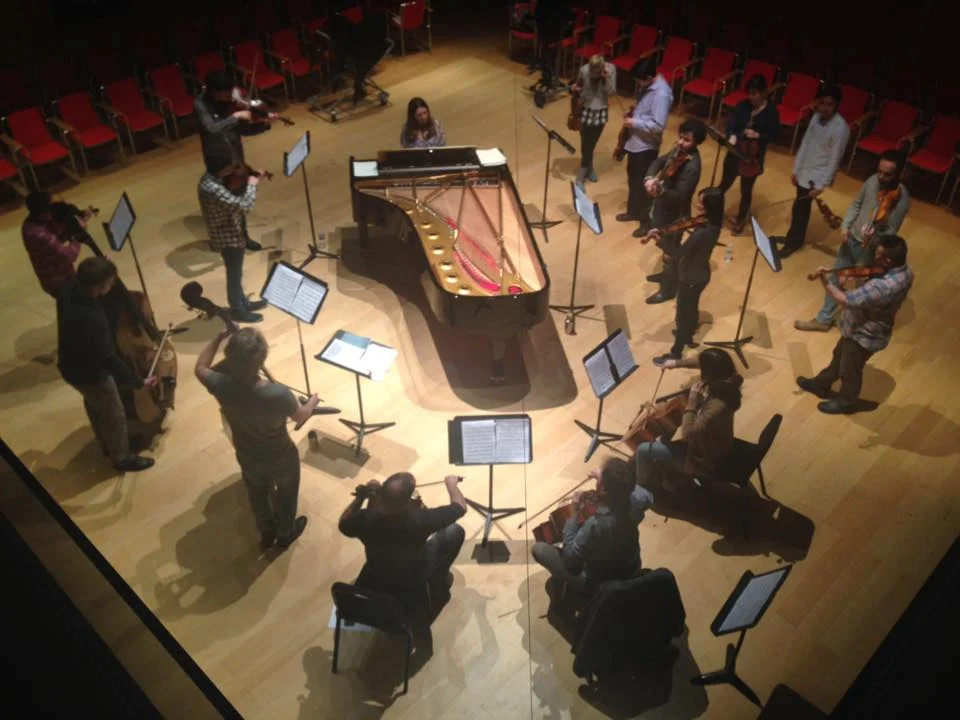Enjoy the program notes for this weekend's concert, written by our fabulous musicologist-in-residence, Kathryn Bacasmot!
It’s easy to forget there was a time when the Goldberg Variations were not a part of the cornerstone collection of music to which we loved to listen. Their real debut into society occurred in 1955, when a young, eccentric, Canadian pianist named Glenn Gould stepped into a recording studio and made what has become an iconic recording of the work (Pablo Casals did a similar thing for the Six Suites for Solo Cello in 1936). Since then, they have captured our collective imagination with their seemingly endless nooks and crannies for exploration. Like the dialogue and scenes of an intricately shot and witty movie, the lines, jokes, and relationships between the notes of the variations reveal themselves to the listener on deeper levels with every listen.
Aria mit verschiedenen Veränderungen, “Aria with Diverse Variations,” was the original title for BWV 988. The nickname “Goldberg” comes from a story that has been acknowledge as likely apocryphal due to lack of concrete evidence (Goldberg would only have been fourteen years old, and no dedication page to the Count exists) —yet it has had such an impact on the music it bears a brief re-telling. The story originates in 1802 with Johann Nikolaus Forkel, Bach’s first biographer, who related an anecdote about Johann Gottleib Goldberg—reportedly one of Bach’s students: “The Count [Hermann Carl von Kaiserling of Dresden] was often sickly, and then had sleepless nights. At these times Goldberg, who lived in the house with him, had to pass the night in an adjoining room to play something when the Count could not sleep. The Count once said to Bach that he should like to have some clavier pieces for his Goldberg, which should be of such a soft and somewhat lively character that he might be a little cheered up by them in his sleepless nights.” Thus, so the story goes, did Bach write the Goldberg variations.
More likely is that Bach wrote the variations as the culmination to his Clavier-Übung (“Keyboard Exercise”), a collection of harpsichord and organ works published in four parts from 1731-1741. Part I included the six Partitas, Part II consisted of the Italian Concerto and the Overture after the French Manner, Part III is a master compendium of organ works, and Part IV is the Goldberg variations. As a whole, the Clavier-Übung traverses every style and skill set a keyboardist would need to know.
The opening theme in the Aria owes its harmonic structure to one of Bach’s contemporaries, whom he admired greatly: George Frideric Handel. A side-by-side comparison of Handel’s Chaconne avec 62 variations (HWV 442) reveals an identical base in the first eight bars between the two works. One of the marvels of the Goldberg variations is the beautiful symmetry of the entire work. The thirty variations are divided into two “sections” of fifteen: Nos. 1-15, and Nos. 16-30. Including the Aria that appears both at the outset and at the conclusion, Goldberg consists of thirty-two parts total. This macro piece structure is reflected in the micro structure each variation, most of which are either 16 or 32 measures in length. There are only three minor key variations, and the first is No. 15—the last variation of the first part. Variation No. 16 is marked “Overture” to herald the beginning of the second half. Every third variation is a canon at an increasing interval (i.e. No. 3 is a canon at the unison, No. 6 a canon at the second, No. 9 a canon at the third, etc.) up to the ninth, and culminates at No. 30 with a quodlibet—a combination of counterpoint and popular song. Here is where Bach’s sense of humor shows most prominently, since the quodlibet includes popular melodies in his day, the words of which translate to “I have been away so long from you” and “Cabbage and turnips have driven me away (had my mother cooked meat, I’d have opted to stay).” After such a long journey through all the possibilities of the theme almost entirely in the major mode of its key of G (perhaps comically referred to as the “cabbage and turnips” redundancy of musical diet), the variations have come to an end, and returned home to the Aria, once again.


